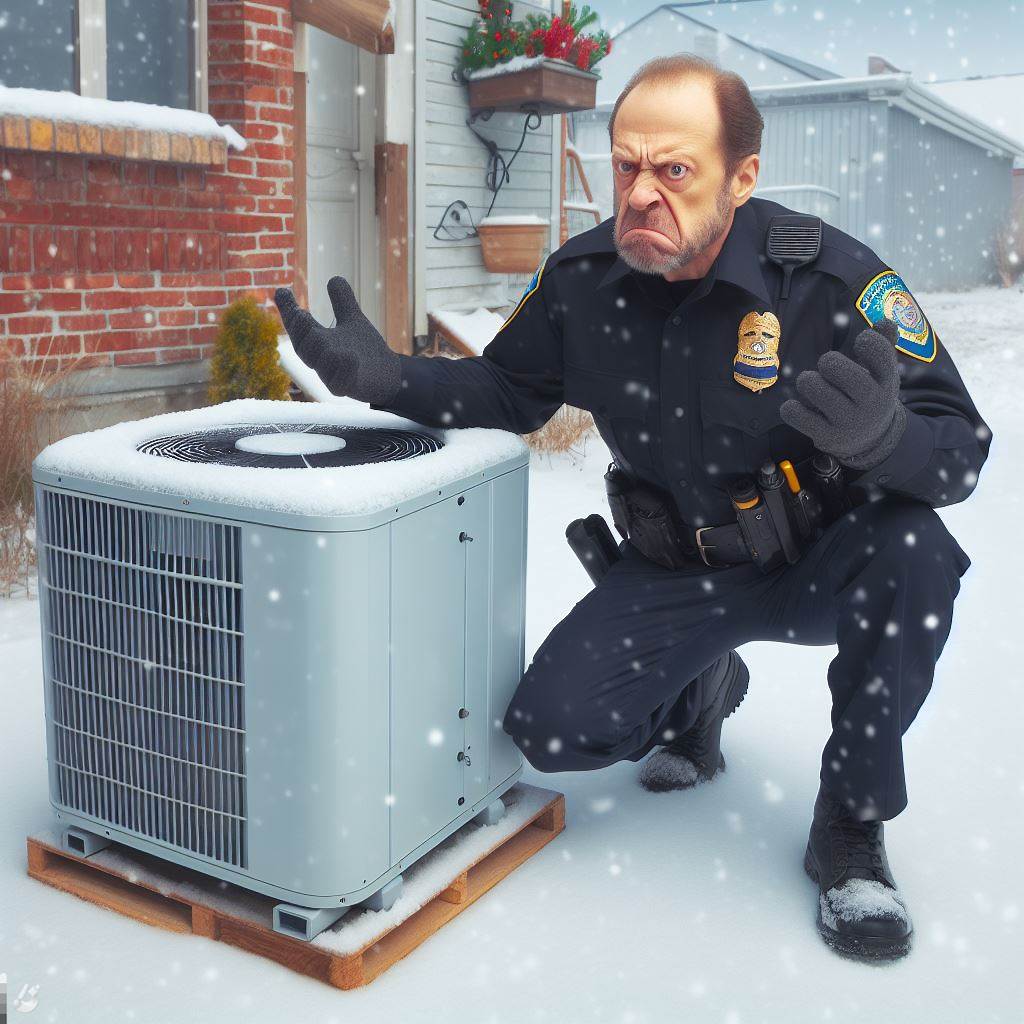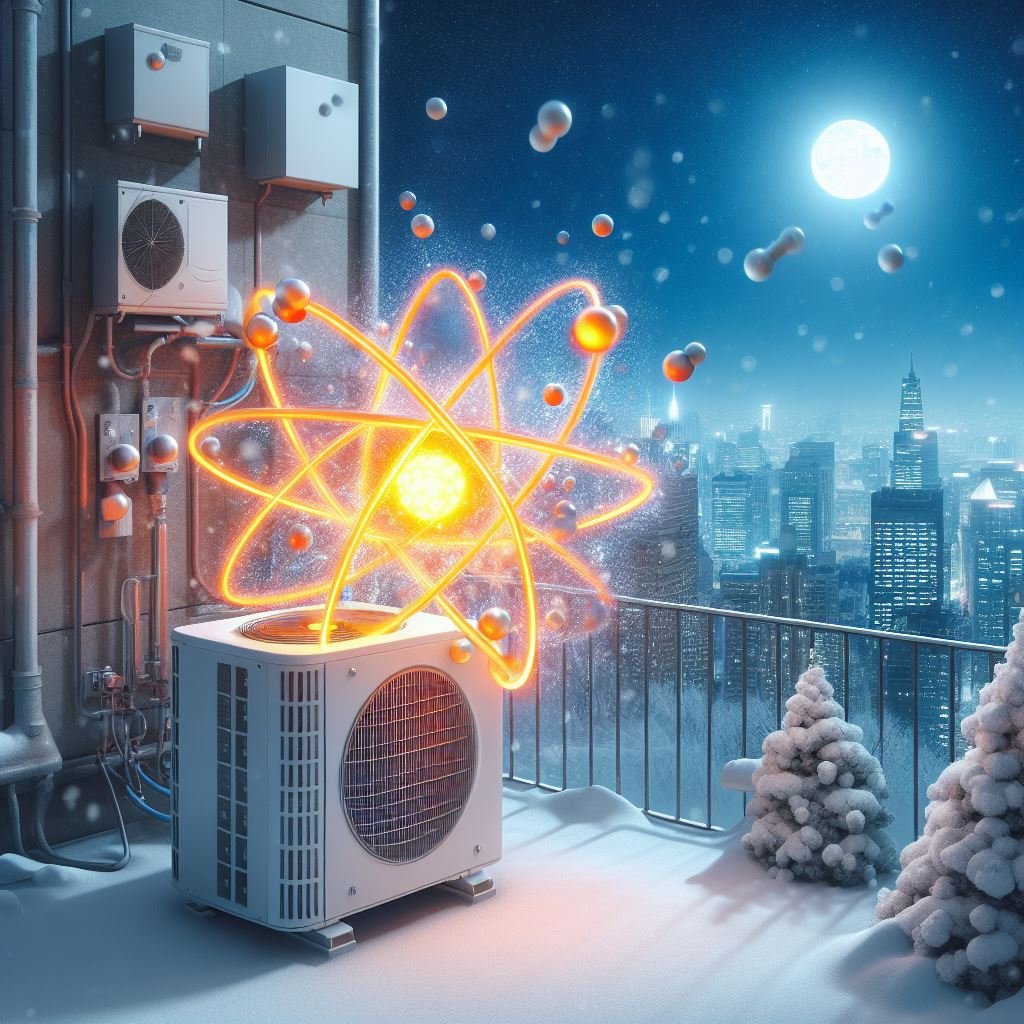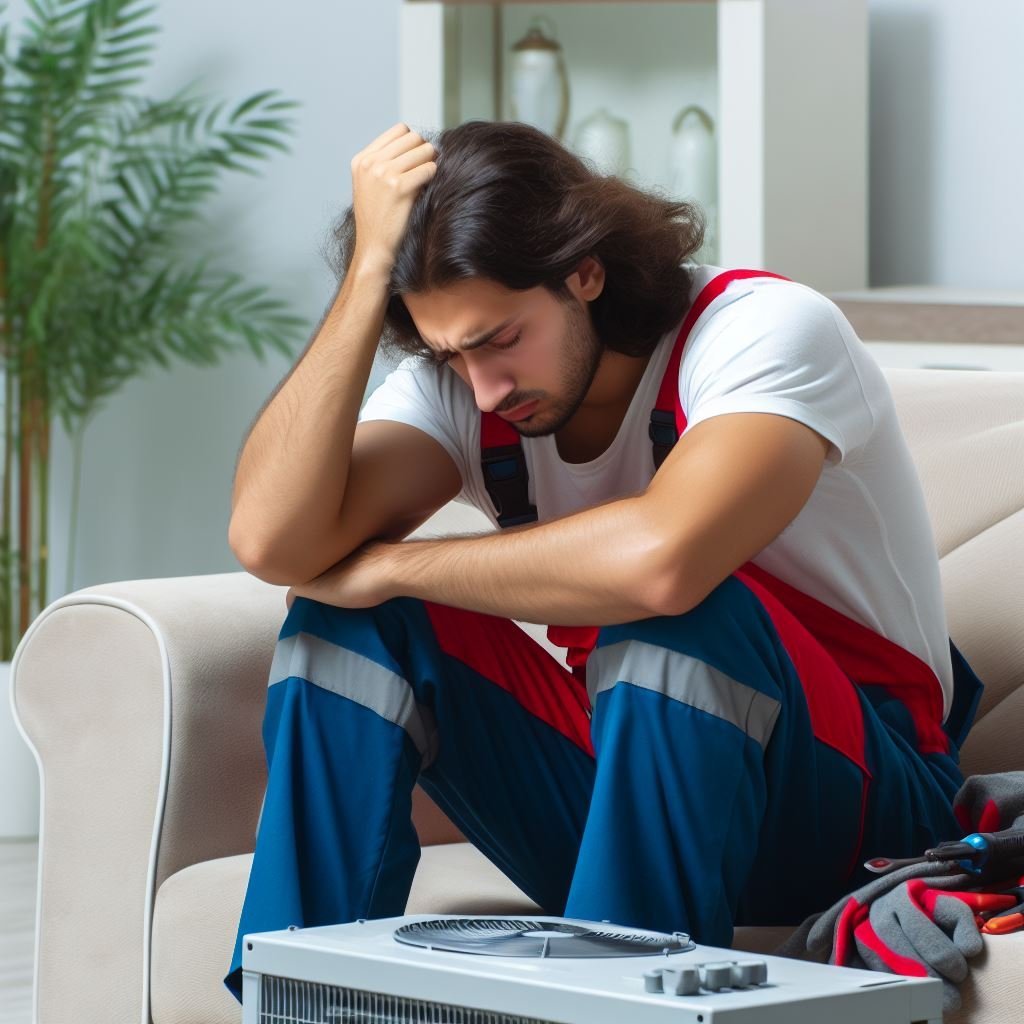Get Tech Tips
Subscribe to free tech tips.
Good COP – Bad COP
There has been a lot of advice being tossed around by contractors and builders about the best time to use the emergency heat feature on an all-electric heat pump system. The answer is never! That was easy. Next article…
In all seriousness, “Emergency Heat” should be used as described, ONLY during an emergency. I guess I should define emergency in the land of the heat pumps. An emergency is when the heat pump is not functioning properly. That might mean there is a refrigerant leak, a bad compressor, or maybe a contactor; it could be a host of many different issues.
The correct way to set up and control an all-electric heat pump system would be to set the auxiliary heat strip to cycle on and off at or below the thermal balance point temperature while the heat pump is still running.
Thermal Balance point – The temperature at which a heat pump’s output matches the exact heat loss of a structure.
If the outdoor temperature is below the balance point temperature, the heat loss of the home will be greater than the Btu/h output of the heat pump.
I know what you’re thinking: it’s common knowledge that heat pumps don’t work below freezing and are, in fact, extremely inefficient at low temperatures. It’s time to play “good COP – bad COP.” When I say COP, I am not referring to the local law enforcement officer who is sworn to serve and protect. I am actually talking about the coefficient of performance. ACCA’s Manual H defines the coefficient of performance as the ratio of the heat delivered by the heat pump to the energy required to operate the heat pump.

If you are like me, that sounds like a bunch of mumbo jumbo. It is probably easier to tell customers to just continue using the “Emergency Heat” setting and call it a day. Once you understand the math behind it, it’s actually pretty simple. Let’s use the resistance or “Auxiliary” heat strip as a baseline. The COP of a resistance heater is 1:1. That means for every dollar of electricity you spend on heat, you are receiving one dollar of heat in your home. Sounds good to me; how can anyone beat something that is 100% efficient?
Let me introduce you to my friend, Mr. Vapor Compression Refrigeration Cycle. His name doesn’t flow well off the tip of my tongue, so I started calling him “Heat Pump.” A heat pump is kinda like a magic box that produces heat out of thin air, literally. That leads me back to the original point that you can’t efficiently pull heat out of cold air, that’s why everyone switches over to “Emergency Heat”. This is the point that I have to ask you to sit down; I am going to ruin everything that you have known and loved your entire HVAC career.
There is no such thing as cold air. In fact, there is no such thing as cold. Cold is an opinion and not a temperature. There is extractable heat all the way down to absolute zero, which is -457.59℉. This is why they say you can never trust an atom (or Adam, for that matter), because they make up everything. The atoms are floating around, vibrating like mini invincible buzz saws. Do buzz saws actually vibrate? You get my point; there is heat in the air no matter what.
Let’s calculate the efficiency of a super basic heat pump and figure out when switching over to “Emergency Heat” is practical.

The table below is the performance data for a random Amana 3-ton heat pump. It is the least efficient heat pump they currently manufacture.


Just to prove my point, let's go straight to the -5℉ column, which would be the Chicago special. The top row shows 12.2k Btu/h or 12,200 Btu/h. I guess we can skip the math because everyone knows a 3-ton heat pump has a heating capacity of 36,000 Btu/h, and this hunk of junk is putting out a crummy 12,200 Btu/h. Well, that statement is only half true. This particular heat pump does have an output of 12,200 Btu/h @ -5℉, BUT how much electricity is it using to do so?
The first thing we have to do is convert the Btu/h rating to watts. There are 0.293 watts in every Btu, so you multiply the total Btu rating at any specific outdoor temperature by 0.293, and voila! You have your watts. In this case –

Now, look back on the chart above, all the way on the left, the third row down, labeled “KW” (Kilowatts), and follow that all the way over to the right under the -5℉ column. You will see that this heat pump will draw a total of 2.1 kilowatts at our chosen outdoor temperature. We all know there are 1,000 watts in a kilowatt.

Now, we can finally solve the COP for this beater of a heat pump.

Still confused? That means this 14.3 SEER2 Amana heat pump, which is the lowest efficiency that they manufacture, will produce $1.70 of heat for every dollar spent on electricity, and it is capable of doing so at -5℉. That is 170% efficient and pulled the extra 70% efficiency out of COLD thin air. I told you, Mr. Heat Pump was magic.
12,200 Btu/h won't heat many homes, and that is why an all-electric heat pump control should be set to cycle the auxiliary heat while simultaneously running the heat pump when you are below the thermal balance point of the home.

After you have read this and come to the conclusion that you have been walking around with bad information your entire career, I won't take it personally if you consider me a “bad COP.” In reality, I think bad COP is the best way to describe resistance heat running without its leader and companion, the heat pump. When your trigger finger is itching to push the “Emergency Heat” button, just remember heat pumps produce good COPs, even the not-so-efficient ones.
—Adam Mufich











Comments
I think this article may provide additional support to concept that energy efficiency is the enemy of comfort. At the listed conditions, the air discharge temperature would be in the range of the low 80’s. Air temperature below body temperature is felt as a draft. In this case, Electric heat would be necessary well above -5F. I think that COP would not be a priority.
I think this article may provide additional support to concept that energy efficiency is the enemy of comfort. At the listed conditions, the air discharge temperature would be in the range of the low 80’s. Air temperature below body temperature is felt as a draft. In this case, Electric heat would be necessary well above -5F. I think that COP would not be a priority.
Система IQOS представляет собой инновационный продукт для работы с нагреваемым табаком.
В отличие от классического курения, здесь используется принцип нагрева.
Многие пользователи отмечают, что такой формат характеризуется другим ощущением вкуса.
Устройство удобно в использовании, что делает его практичным вариантом.
Продуманная конструкция позволяет IQOS органично вписываться в повседневную жизнь.
Производитель уделяет внимание деталям конструкции, что повышает стабильность работы.
Регулярное обслуживание помогает продлевать срок службы устройства.
Следовательно, IQOS остаётся современным устройством для тех, кто рассматривает такие системы.
https://terea777.shop/volgodonsk/catalog
Система IQOS представляет собой инновационный продукт для работы с нагреваемым табаком.
В отличие от классического курения, здесь используется принцип нагрева.
Многие пользователи отмечают, что такой формат характеризуется другим ощущением вкуса.
Устройство удобно в использовании, что делает его практичным вариантом.
Продуманная конструкция позволяет IQOS органично вписываться в повседневную жизнь.
Производитель уделяет внимание деталям конструкции, что повышает стабильность работы.
Регулярное обслуживание помогает продлевать срок службы устройства.
Следовательно, IQOS остаётся современным устройством для тех, кто рассматривает такие системы.
https://terea777.shop/volgodonsk/catalog
TurkPaydexHub se distingue comme une plateforme d’investissement en crypto-monnaies de pointe, qui exploite la puissance de l’intelligence artificielle pour fournir a ses clients des avantages decisifs sur le marche.
Son IA etudie les marches financiers en temps reel, detecte les occasions interessantes et execute des strategies complexes avec une finesse et une celerite inaccessibles aux traders humains, augmentant de ce fait les potentiels de profit.
TurkPaydexHub se distingue comme une plateforme d’investissement en crypto-monnaies de pointe, qui exploite la puissance de l’intelligence artificielle pour fournir a ses clients des avantages decisifs sur le marche.
Son IA etudie les marches financiers en temps reel, detecte les occasions interessantes et execute des strategies complexes avec une finesse et une celerite inaccessibles aux traders humains, augmentant de ce fait les potentiels de profit.
Immediate Olux se differencie comme une plateforme de placement crypto de pointe, qui exploite la puissance de l’intelligence artificielle pour fournir a ses clients des avantages decisifs sur le marche.
Son IA analyse les marches en temps reel, repere les opportunites et execute des strategies complexes avec une precision et une vitesse inatteignables pour les traders humains, augmentant de ce fait les potentiels de rendement.
Immediate Olux se differencie comme une plateforme de placement crypto de pointe, qui exploite la puissance de l’intelligence artificielle pour fournir a ses clients des avantages decisifs sur le marche.
Son IA analyse les marches en temps reel, repere les opportunites et execute des strategies complexes avec une precision et une vitesse inatteignables pour les traders humains, augmentant de ce fait les potentiels de rendement.
Creative photography often focuses on highlighting the beauty of the human form.
It is about composition rather than surface.
Skilled photographers use soft lighting to reflect mood.
Such images celebrate authenticity and individuality.
https://xnudes.ai/
Every frame aims to evoke feelings through movement.
The intention is to portray human beauty in an artful way.
Viewers often value such work for its creativity.
This style of photography combines art and sensitivity into something truly expressive.
Creative photography often focuses on highlighting the beauty of the human form.
It is about composition rather than surface.
Skilled photographers use soft lighting to reflect mood.
Such images celebrate authenticity and individuality.
https://xnudes.ai/
Every frame aims to evoke feelings through movement.
The intention is to portray human beauty in an artful way.
Viewers often value such work for its creativity.
This style of photography combines art and sensitivity into something truly expressive.
To leave a comment, you need to log in.
Log In